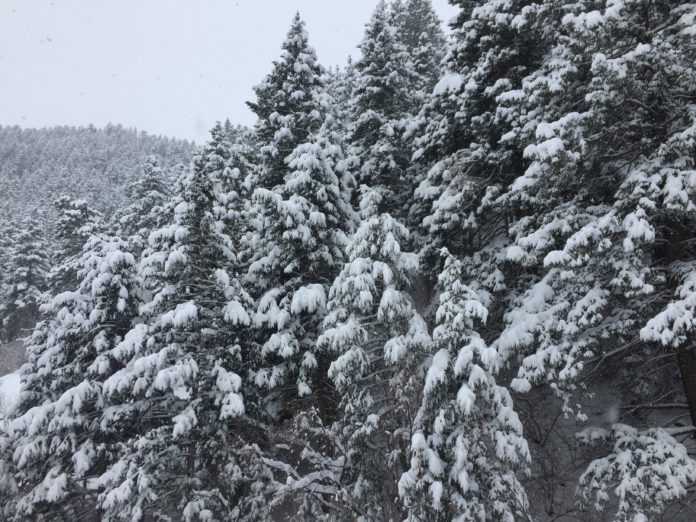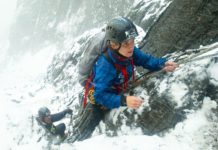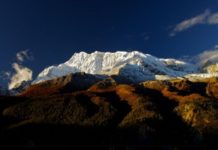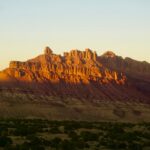I got lost a few days ago — “lost” being kindof relative. I decided to hike through a local park during a blizzard. And I never lost my sense of direction. But the footsteps faded until I was on top of a windy peak, looking down on a route I hadn’t seen before. I knew that the natural trail would take me over the lateral peak. And if I took that route, it wouldn’t be long before the mountains would spit me into a parking lot. But stubbornness pulled me in another direction — away from the ascent.
If you’ve hiked with me before, you know that I choose the wrong direction often. Sometimes my pride gets the best of me and I’ll hike two miles out of the way before admitting that I’m wrong.
After ignoring my instincts once again, I had to choose a direction and commit to it. I walked through knee-deep snow until I could find a better way. I wasn’t carrying any food or water – just the burden of my own thoughts. And somehow I knew that moving forward would be better than back-tracking.

But the strange part of my experience is that I was never worried. Maybe I’m reckless. But it’s as if being lost is a natural state of being. I don’t ever really know where I’m going. I just go. Fumbling through the unknown seems to be a normal part of the human experience. And once you resign yourself to the flow of your life, it becomes a little easier.
I also wonder if anyone ever really knows where they’re going. Claiming you do just means you’re delusional.
Mountain Topography
When the footprints run out, I find myself looking at landmarks instead of a path that someone travelled before me. Life feels a little bit like this too. When I’m not sure where I’m going, I can take a look at the big moments that emerged from my past. And sometimes a pattern surfaces.
I don’t think it’s a coincidence that I return to the mountains over and over. They’re my pattern. It’s like I use them to connect the dots in my own life.
When a life in corporate America nearly pushed me into madness, I read about the Appalachian Trail for the first time. When I doubted my ability to find a community that was capable of both acceptance and resilience, I found a flight to Kathmandu in my hand. The Colorado Trail happened when I felt like I was stuck in concrete in 2017.
To me, mountains look like the Earth’s flesh, wrinkled with age. If we were at sea, they’d be lighthouses, blinking in the dark. Instead, they cast shadows and protrude from the Earth like a natural beacon. And the peak can be found where there’s an absence of darkness.
Off Trail
While distracting me from myself, I recently read a book called “Off Trail: Finding My Way Home in the Colorado Rockies” by Jane Parnell. Her words felt like a beacon. Her story described what it was like to become the first woman to scale Colorado’s tallest peaks.
She talked about how she used mountaineering to cope with trauma. It was easier to make sense of the world while climbing. When she learned that her sister had Schizophrenia, she managed herself by scaling another peak. When she was thrust into a heartbreaking divorce, the mountains remained whole and solid.
She wrote: “At each dizzying crux, the mountains were the one anchor in my life that held. The anchor still holds when I tumble into the loneliness and confusion of expatriotism. Mountains leap to my rescue, catching me before I hit bottom.”
The mountains are an anchor that holds me too. I’ve experienced nearly every emotion while following the imperfections of the Earth. And maybe being lost facilitates a deeper kind of connection.












